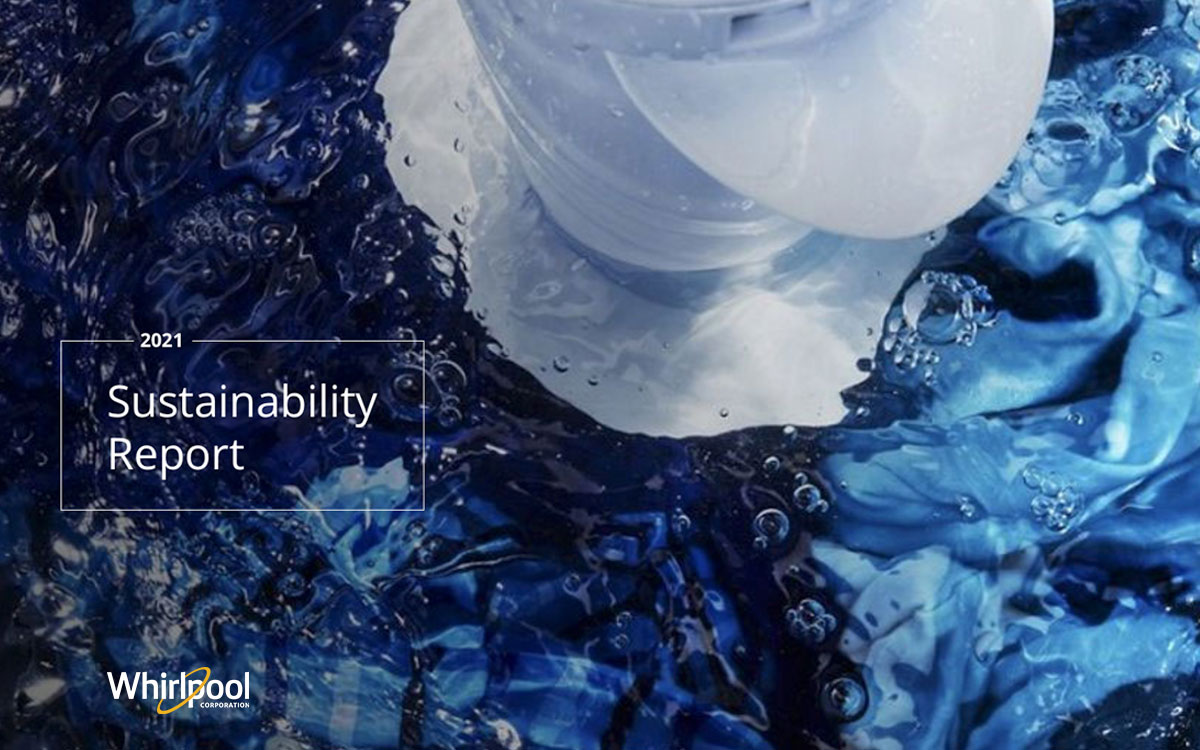Whirlpool Corp. outlines progress on Net Zero targets as part of long-term commitment to sustainability


Whirlpool Corporation today issued an update on progress towards achieving Net Zero targets the company first announced in May of 2021. As part of this update, Whirlpool Corp.—building on its long history of improved environmental performance—is accelerating its commitment to sustainable operations through investments in renewable energy, manufacturing plant retrofits, and on-going energy, water, and waste reduction projects.
“Our vision at Whirlpool is to improve life at home. We know fulfilling that vision requires us to think not just in terms of the four walls around us and the communities in which we live, but of the planet that sustains us,” said Marc Bitzer, chairman and CEO of Whirlpool Corp. “Over the course of our history we have consistently developed products and technologies that deliver on this vision.”
Demonstrating Action*
In 2021, Whirlpool Corp.:
- Drove a 27 percent reduction of greenhouse gas (GHG) emissions globally for all Scope 1 and Scope 2 emissions compared to a 2016 baseline, accelerating the company’s progress to meet its Net Zero target by 2030.
- Achieved 14 percent Scope 3 Category 11 emissions reduction, in line with its target reduction of 20 percent by 2030, compared to 2016 levels.
- Issued its first Sustainability Bond, with the proceeds allocated to drive positive environmental and social impacts.
- Continued to develop innovative technologies and products that reduce its environmental impact.
It’s not too far into the future that we envisage manufacturing home appliances in plants that are 100 percent renewable-powered with off-site and expanded on-site wind farms and solar panels, and an end-of-life product recycling program which directly feeds into our own supply chain for new products.”
Whirlpool Corp.’s approach to fostering long-term, sustainably-resilient operations starts with innovative design and technology to improve energy and water efficiency, as well as recyclability. Continuous improvements as part of the World Class Manufacturing process have been rolled out in plants and operations across the manufacturing process and supply chain.
“Whirlpool takes a holistic, long-term approach to environmental sustainability,” said Ron Voglewede, director of sustainability. “It’s not too far into the future that we envisage manufacturing home appliances in plants that are 100 percent renewable-powered with off-site and expanded on-site wind farms and solar panels, and an end-of-life product recycling program which directly feeds into our own supply chain for new products.”
Whirlpool Corp. is one of the largest onsite wind energy consumers among Fortune 500 companies in the U.S. Through expanding on-site renewables, additional Virtual Power Purchase Agreements (VPPAs), and green energy procurement, the company targets a nearly one-third reduction in its global carbon footprint in its operations.
The company is on track to achieve its Zero Waste to Landfill (ZWtL) goal for all manufacturing sites by the end of the year. Currently, 90 percent of its sites have achieved Gold or Platinum ratings using the UL ECVP 2799 Zero Waste to Landfill standard. The company has also recently joined the U.S. Department of Energy’s (DOE) Better Climate Challenge, targeting a reduction of greenhouse gas emissions by 50 percent within 10 years and collaborating with the DOE and other organizations to cut carbon and save energy. Over the past five years, it has also achieved a 34 percent reduction in water consumption in its operations globally.
Advancing a Sustainable Future Through Our Products
Whirlpool Corp.’s average refrigerators use less energy than a 60 watt light bulb, its clothes washers have 57 percent more capacity than they did in 1992, and they use 78 percent less energy1—all without compromising quality and function. Overall, Whirlpool Corp. has reduced by 60 percent its product emissions since 2005, and continues to invest in innovation to launch leading products that improve performance, while lowering their overall carbon footprint.
An initiative in Europe has led to the removal of expanded polystyrene (EPS) packaging from cooking products and dishwashers sold to one of its large retail customers. The company also considers how it can use its scale and its presence in approximately 70 percent of U.S. homes2, to drive sustainable behaviors—from educating consumers about not needing to pre-rinse dishes before placing them in the dishwasher, to using connected appliance features to run their appliances during the best times to lower their costs and have the least impact on the electrical grid.
* To learn more about Whirlpool Corp.’s progress, please view the recently released 2021 Sustainability Report.
1 AHAM Energy Survey Report 2020.
2 Based on 2021 Whirlpool Corporation consumer survey among households having income of $30k or more.








